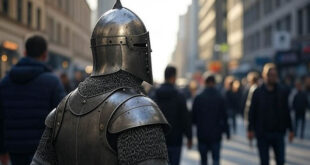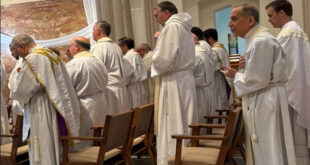For centuries, science and miracles have been subjects of intense debate and fascination. On one hand, science, with its empirical methods and constant search for answers through observation and experimentation, has unraveled many of the universe’s mysteries. On the other hand, miracles—those events that seem to defy the laws of nature—continue to serve as tangible proof of divine intervention for many. How, then, do these seemingly opposing concepts relate? Is it possible to reconcile faith in miracles with the progress of modern science? This article aims to explore these questions from a Catholic perspective, showing how faith and reason, rather than being in conflict, can coexist and enrich one another.
The Concept of a Miracle in Catholic Tradition
Before delving into the relationship between science and miracles, it is essential to understand what a “miracle” means from a theological standpoint. The Catholic Church defines a miracle as an extraordinary event that cannot be explained by natural laws and is attributed directly to divine intervention. Miracles are seen as signs of God’s action in the world, often as responses to faith or manifestations of God’s power at key moments in salvation history.
The Catechism of the Catholic Church states: “The miracles of Christ and the saints… bear witness that the Kingdom of God is present in him” (CCC 547). Throughout the Gospels, we find numerous accounts of miracles performed by Jesus: healings, exorcisms, the multiplication of loaves and fish, raising the dead, and His own resurrection, which is the central miracle of Christianity.
However, the key question for many believers and skeptics alike is: how do these events reconcile with our current scientific knowledge?
Science: The Search for Truth in the Created World
Modern science, as we know it, has roots in medieval philosophical and Christian tradition, where many of the early scientists were people of faith. They saw the investigation of the natural world as a way to better understand the Creator’s work. Names like Nicolaus Copernicus, Gregor Mendel (the father of genetics), and Georges Lemaître (who proposed the Big Bang theory) were not only brilliant scientists but also devout believers.
From this perspective, science is not an antagonist to faith, but rather a tool that allows us to explore and marvel at God’s creation. St. John Paul II eloquently expressed this when he said: “Faith and reason are like two wings on which the human spirit rises to the contemplation of truth” (Fides et Ratio, 1).
The Apparent Tension Between Miracles and Science
If both faith and science seek truth, why is there tension between miracles and scientific discoveries? First, it’s important to recognize that science focuses on studying the natural world and its laws. Its domain is limited to what is observable, measurable, and repeatable. From a scientific standpoint, a miracle, being an extraordinary and unique event, cannot be verified or replicated using the scientific method.
Skeptics often argue that as science advances, many so-called miracles can be explained by natural means. For example, diseases that were once deemed incurable and whose spontaneous remissions were considered miraculous can now be treated effectively thanks to medical progress. This doesn’t mean miracles don’t exist, but rather that our understanding of the world has grown, along with our ability to explain previously inexplicable phenomena.
However, the existence of scientific explanations does not negate the possibility of God performing miracles. For believers, God is the author of natural laws and, as such, can act both through them and beyond them. A miracle doesn’t contradict nature’s laws; it transcends them.
Contemporary Examples of the Coexistence Between Science and Miracles
A notable example of the interaction between faith and science is the process of canonization in the Catholic Church. For a person to be canonized as a saint, one of the requirements is the verification of at least one miracle attributed to their intercession, typically an inexplicable healing. To determine if a miracle is genuine, the Church submits the case to rigorous medical and scientific examinations. Only when every possible natural explanation is exhausted does the Church consider divine intervention as the only plausible cause.
In many of these cases, the doctors and scientists involved are not necessarily believers, which adds a layer of objectivity. Yet, they often find themselves baffled by healings that defy all current medical knowledge. This reflects an openness to the possibility that the world cannot be reduced solely to what we can observe or measure.
Faith and Reason: A Complementary Relationship
Rather than viewing science and miracles as opposing forces, Catholic theology invites us to see them as complementary. Science helps us understand how the created world functions, while miracles remind us that the Creator of that world is free to intervene in ways that surpass our comprehension. As St. Augustine wrote: “Miracles are not contrary to nature, but only contrary to what we know about nature.”
In this sense, the real conflict is not between science and faith, but between a reductionist view of science—which excludes any possibility of the supernatural—and a faith that refuses to see science as a legitimate pursuit of truth. Both disciplines, when practiced with humility and openness, lead us closer to the ultimate truth, which is God.
Scientific Progress and the Wonder of Creation
One fascinating point is that the more science advances, the more complex and wonderful creation appears. From the intricate details of molecular biology to the unfathomable vastness of the cosmos, the universe constantly offers new reasons for awe. The very fact that we can discover the laws governing this universe is, in itself, a sign of the rationality with which God has ordered creation.
For believers, scientific progress doesn’t diminish the need for faith; it reinforces it. By contemplating the wonders of the natural world, we can see God’s hand behind them. Pope Francis expressed this clearly in his encyclical Laudato Si’, saying: “Science and religion, with their distinctive approaches to understanding reality, can enter into an intense dialogue fruitful for both” (Laudato Si’, 62).
Conclusion: An Ongoing Dialogue
The relationship between miracles and science is not a settled issue but an ongoing dialogue. As human knowledge advances, we will continue to encounter questions about how the supernatural and the natural intersect. However, from a Catholic perspective, it is clear that science and faith are not in conflict. On the contrary, they are complementary paths to the truth.
Miracles remind us that the universe is larger than we can comprehend and that behind the natural laws lies the Creator of those laws, who can act freely within His creation. Meanwhile, science invites us to explore and marvel at the work of God, deepening our understanding of the world He has given us. Together, miracles and science lead us to a deeper truth: the reality of a God who is both transcendent and immanent, present in the visible and the invisible, whose love and power know no bounds.






